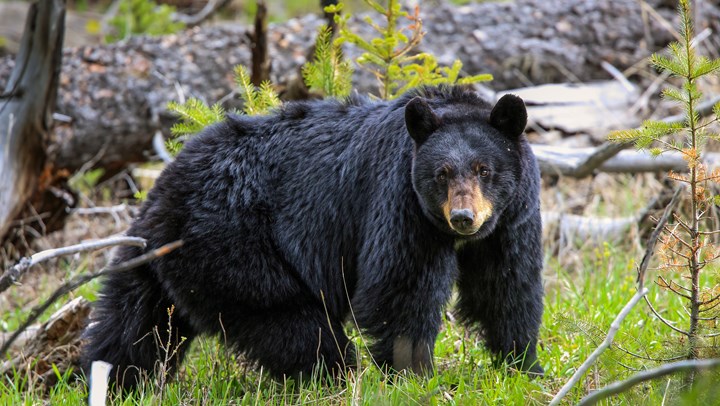
by Karen Mehall Phillips - Monday, June 5, 2017

Myrtle Beach, S.C., is a hit for its popular beach, golf and shopping scene, but if you’re headed there this summer be advised: Black bears also have discovered this coastal paradise. The state DNR now reports the area’s bear population to be in excess of 300 animals, increasing the potential for human-bear conflicts. Though the state has pled its case to hunters for the past six years, only 13 bears have been dropped—far shy of the 30 per year S.C. Department of Natural Resources reps say must be removed to keep the population in check.
As the Wall Street Journal highlighted two weeks ago, “The bear population has been spiking over the years,” said Alan Clemmons, a Republican state representative who sponsored a bill to license more hunters by removing the state’s former lottery system for drawing tags. “You see rising numbers of bear-related automobile accidents.” With the bill headed for the governor’s desk, come fall any licensed hunter who has a big-game permit will be able to get a bear permit.
The common-sense push to provide more bear permits comes at a time when the state reports it has both resident mountain and Myrtle Beach-area bear populations. The WSJ notes that more than 322,000 people reside in Horry County alone, which includes Myrtle Beach—a number that has more than doubled since 1990.
But despite the need to keep bear populations within carrying capacity, Wayne Brennessel, executive director of the Humane Society of South Carolina, says perhaps it is time to move the bears. Of course, capturing and moving even one bear is expensive. And, as state wildlife biologist Charles Ruth explains, “There is no guarantee the omnivores will stay away. These animals want to come back to where they were.”
Are More Bears on the Horizon? What Says Other East Coast States?
For a fast fact, the International Union for Conservation of Nature (IUCN), which we’ve covered on this website in the past, says the black bear population in the Lower 48 may surpass 300,000. Considering bears regularly live near humans and are known to topple their share of trashcans, are increased human-bear encounters far behind?
According to NRA-ILA, Connecticut lawmakers are considering legalizing bear hunting. Data shows the ursine population has swelled to more than 700 in a state where there were merely a few in the 1980s. NRA-ILA reports that New Jersey also has worked to promote and expand bear hunting specifically to sidestep human-bear encounters.
"We all know that times have changed with development and fewer hunters, and as a result, wildlife is increasingly abundant in some of these pockets," said Darin Goens, NRA-ILA New Jersey State Liaison. "The real problem occurs as bear populations continue to grow and human-animal interactions increase. Last season, for example, New Jersey harvested 562 bears after the first bow season. You can imagine what would happen in that state if we went back to the days when bear hunting was not permitted. Hunters play a crucial role in maintaining the proper population balance."
E-mail your comments/questions about this site to:
[email protected]
Proudly supported by The NRA Foundation and Friends of NRA fundraising.
